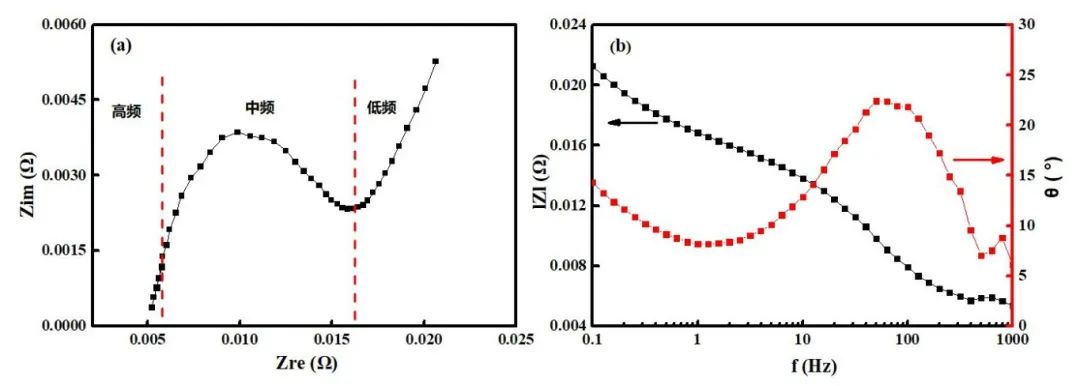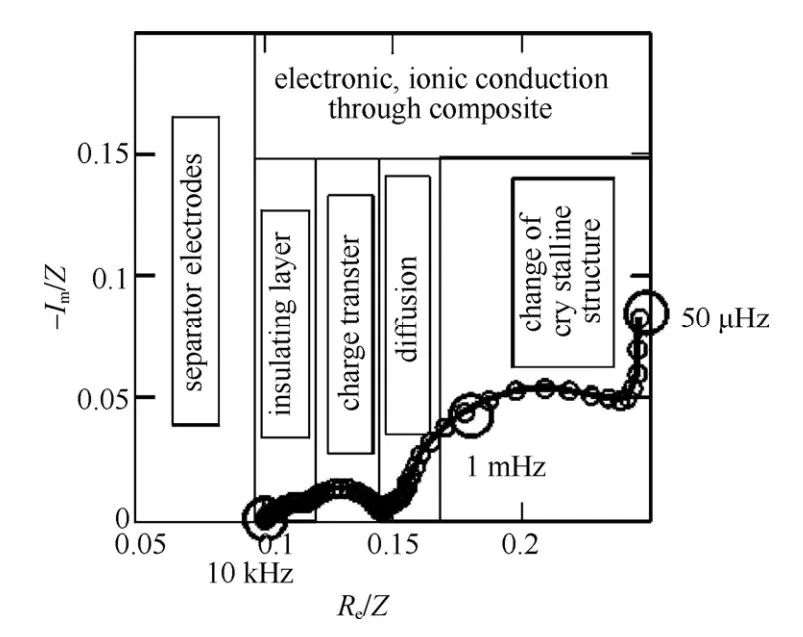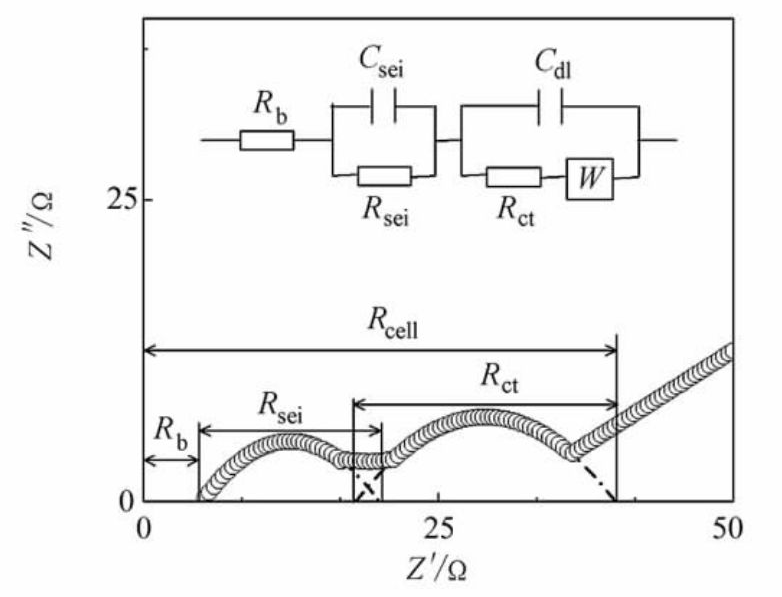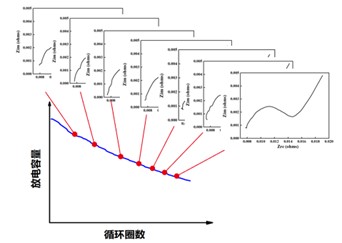Exploring Electrochemistry | Summarizing EIS in Lithium-ion Batteries
Exploring Electrochemistry | Summarizing Electrochemical Impedance Spectroscopy in Lithium-ion Batteries
Preface
Electrochemical measurement methods, based on measuring electrochemical parameters such as potential, conductivity, and current in electrochemical systems, achieve qualitative and quantitative analysis of system components by exploring the relationship between the measured and the system being measured. Common electrochemical measurement methods include[1]:constant current/potential methods, chronoamperometry/chronopotentiometry, voltammetry, and Electrochemical Impedance Spectroscopy (EIS).
Compared to other electrochemical measurement methods, Electrochemical Impedance Spectroscopy (EIS) not only perturbs the original state of the measured system to a lesser extent but also provides impedance characteristics over a wide frequency range, which can reflect more internal electrochemical processes and the information they contain. Currently, EIS has been widely applied in the field of lithium-ion batteries. Numerous researchers have conducted comprehensive exploration and studies on lithium-ion batteries by accurately measuring and analyzing EIS data. This paper will analyze Electrochemical Impedance Spectroscopy using lithium-ion batteries as an example.
1.The Basic Principles of EIS (Electrochemical Impedance Spectroscopy)
Electrochemical Impedance Spectroscopy (EIS), also known as Electrochemical AC Impedance Spectroscopy, is a crucial method for studying the electrochemical performance of lithium-ion batteries. EIS involves applying a small-amplitude sinusoidal electrical signal to the terminals of the system as the input disturbance signal and detecting the output electrical signal of the system. By comparing the input and output electrical signals, the electrochemical impedance spectrum of the system is obtained. This method belongs to the frequency domain measurement techniques. Since a lithium-ion battery is a system characterized by linearity, stability, and causality, a series of sinusoidal voltage signals X with amplitudes of 5mV and frequencies ranging from 0.1Hz to 100Hz are used as excitation signals. The corresponding sinusoidal current response Y is obtained. The frequency response function Z(ω) = X/Y represents the impedance value at the corresponding frequency. The impedance values obtained at these frequencies constitute the impedance spectrum of the battery.
EIS is commonly represented using Bode and Nyquist plots. The Nyquist plot employs a coordinate system with the real part of impedance (ZRe) as the horizontal axis and the negative imaginary part (-ZIm) as the vertical axis. This plot provides an intuitive reflection of the time constants of various reaction processes within the electrochemical system. On the other hand, the Bode plot illustrates the variation of phase shift and magnitude with the applied frequency and is typically used to measure the performance and stability of electronic circuits. Figure 1 depicts the Nyquist and Bode plots for a 2500mAh lithium iron phosphate (LiFePO4) lithium-ion battery. The impedance spectrum ranges from 0.1Hz to 1KHz, decreasing in frequency from left to right. At 1kHz, the imaginary part of impedance is approximately zero. As the frequency decreases, the real part of impedance gradually increases, while the negative imaginary part of impedance exhibits a trend of initially increasing, then decreasing, and finally increasing again.

Figure 1. Nyquist plot (a) and Bode plot (b) of the EIS.
The EIS curve consists of three segments: two irregular semicircles in the high and mid-frequency ranges and a straight line in the low-frequency range. Analysis of the electrochemical processes in lithium-ion batteries reveals that different reaction processes correspond to different curves: irregular semicircles in the high-frequency region represent the migration and diffusion processes of lithium ions through multiple layers and the solid electrolyte interface (SEI) film; irregular semicircles in the mid-frequency region represent charge transfer processes; and the straight line in the low-frequency region represents solid-state diffusion of lithium ions in the active electrode material[2].
2. EIS Analysis
2.1 Composition of EIS
A typical EIS in lithium-ion batteries can be divided into the following five parts, as shown in Figure 2:
(1) Ultra-high frequency region (above 10 kHz): This region corresponds to the ohmic resistance associated with the transport of Li+ ions and electrons through the electrolyte, porous separator, conductors, active material particles, etc. It appears as a single point in the EIS spectrum and can be represented by a resistance Rs.
(2) High frequency region: This region corresponds to a semicircle related to the diffusion migration of Li+ ions through the surface insulating layer of the active material particles. It can be represented by a parallel circuit of Rsei and Csei. Here, Rsei represents the resistance of lithium-ion diffusion migration through the SEI membrane.
(3) Mid-frequency region: This region corresponds to a semicircle associated with the charge transfer process. It can be represented by a parallel circuit of Rct and Cdl. Rct represents the charge transfer resistance, also known as the electrochemical reaction resistance, while Cdl represents the double-layer capacitance.
(4) Low-frequency region: This region corresponds to a straight line associated with the solid-state diffusion process of Li+ ions within the active material particles. It can be represented by the Warburg impedance Zw, which describes diffusion.
(5) Extremely low frequency region (<0.01 Hz): This region comprises a semicircle related to changes in the crystal structure of active material particles or the formation of new phases, as well as a vertical line related to the accumulation and consumption of Li+ ions within the active material. This process can be represented by a parallel circuit of Rb and Cb, along with a series circuit of Cint. Here, Rb and Cb represent the resistance and capacitance characterizing changes in the structure of the active material particles, while Cint represents the capacitance characterizing the accumulation or consumption of Li+ ions within the active material.

Figure 2. Typical EIS of Li+ extraction and insertion processes in embedded compound electrodes. [3]
2.2 Equivalent Circuit Model
Lithium-ion batteries can be understood as circuit systems containing resistors, inductors, and capacitors. The establishment of an equivalent model simplifies the battery into a circuit system, thereby simulating the changes in electrochemical systems. A commonly used equivalent circuit model for lithium-ion batteries is shown in Figure 3. Corresponding to the impedance components at various frequencies in the impedance spectrum, Rs represents the ohmic resistance; Rsei and Csei represent the resistance and capacitance of the SEI film, corresponding to the high-frequency semicircles; Rct and Cdl respectively represent charge transfer resistance and double-layer capacitance, corresponding to the mid-frequency semicircles; W represents the Warburg impedance, i.e., the diffusion impedance of lithium ions in the electrode material, represented on the complex plane by a straight line at a 45° angle to the real axis. Typically, data processing software such as Zview, ZSimpWin, EIS300, LEVMW, Impedance spectroscopy, Autolab Nova, etc., are used to select appropriate equivalent circuit models and fit the electrochemical impedance spectrum of the battery, thereby obtaining impedance values corresponding to each stage.

Figure 3: Impedance Spectrum and Equivalent Circuit Model of Lithium-ion Battery[4]
3. Application Scenarios
EIS is an important method for studying electrochemical interface processes, widely used in the field of electrochemistry, especially in lithium-ion battery research. Its applications include dynamic measurements of conductivity, apparent chemical diffusion coefficients, SEI growth and evolution, charge transfer, and material transfer processes. Specific application scenarios are as follows:
1. Characterization of electrode materials: Testing the EIS of electrode materials in different electrolytes can assess the conductivity and reaction activity of electrode materials, aiding in optimizing the design and preparation of electrode materials.
2. Study of internal electrochemical processes in lithium-ion batteries: EIS provides information on internal electrochemical processes in batteries, such as ion migration in electrolytes, charge transfer between electrode materials and electrolytes, and electrochemical reaction kinetics, helping to optimize battery performance and lifespan.
3. Battery state and fault diagnosis: EIS can monitor changes in internal electrochemical processes in batteries, such as electrode material loss, changes in electrolyte concentration and temperature, enabling the diagnosis of battery states and faults.
4. Evaluation of battery cycle life: EIS can assess battery cycle life and degradation mechanisms by measuring impedance changes during battery cycling, aiding in the development of battery use and maintenance strategies.
5. Study of battery thermal runaway characteristics: EIS can be used to study the thermal runaway characteristics of batteries, such as the impact of temperature, current density, and capacity on battery impedance, thereby evaluating battery safety performance and designing safer batteries.
6. Study of electrolyte properties: EIS can be used to study the chemical and physical properties of electrolytes, such as ion concentration, ion migration rate, and ion diffusion coefficients, by measuring the electrolyte's conductivity and ion migration characteristics.
In summary, it is evident that the judicious use of EIS can assist researchers in gaining a better understanding of batteries, thereby enhancing battery development capabilities. This has significant real-world implications for battery performance research and applications, as well as for the management and utilization of battery pack systems.
4. Summary
Based on the widespread application of EIS in lithium-ion batteries, IEST has independently developed an electrochemical performance analyzer (Figure 4). In addition to conventional charge-discharge functions, this device also integrates CV (cyclic voltammetry) and EIS (electrochemical impedance spectroscopy) modules, enabling EIS testing of batteries during the cycling process, as shown in Figure 5. As illustrated in Figure 4(b), the EIS, as an independent testing module, can be placed after any testing step, allowing for EIS testing after every N cycles or when the battery reaches a certain state of charge (SOC) during charging/discharging processes. The testing process does not require disassembly or movement of the battery, thereby improving testing efficiency and accuracy.

Figure 4. Electrochemical Performance Analyzer ERT7008 (a) and Cycling EIS Testing Procedure (b)

Figure 5. EIS Data Plot during Cell Cycling
5. References
[1] Ning B,Cao B,Wang B,et al.Adaptive Sliding Mode Observers for Lithium-ion Battery State Estimation Based on Parameters Identified Online[J]. Energy,2018,153:732–742.
[2] Zhang Jinlong, Tong Wei, Qi Hanhong, et al. Application of square root sampled point Kalman filter in state of charge estimation of lithium iron phosphate battery pack[J]. Proceedings of the Chinese Society of Electrical Engineerin,2016,.36(22):6246-6253.
[3] Barsoukov E, Macdonald R J. Impedance Spectroscopy: Theory, Experiment, and Applications[M]. Wiley-Interscience, 2005.
[4] Zhang S S, Xu K, Jow T R. Electrochemical impedance study on the low temperature of Li-ion batteries[J]. Electro-chim Acta, 2004, 49 ( 7) : 1057-1061.
